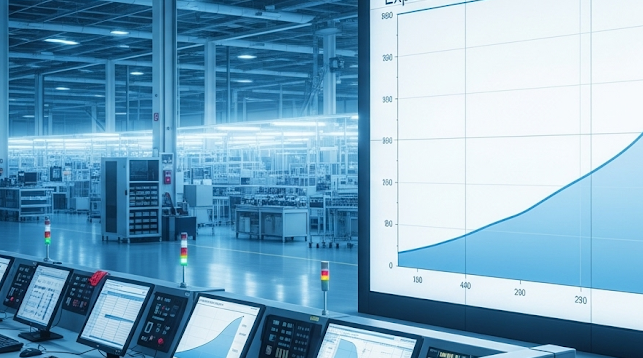
End of Exponential
The End of the Exponential
When it comes to technology and economics, one of the most powerful narratives of the last few centuries has been that of exponential growth. We see it in GDP charts and hear it in discussions of Moore’s Law. This narrative typically goes as follows: technology enables the creation of better technology. This creates a self-reinforcing cycle, a snowball effect where each new innovation makes the next one easier and faster to achieve, leading to an exponential curve of progress that seems to stretch towards incredible, near-infinite limits.
This story is compelling, but I would like to propose an alternative explanation for the exponential trend we’ve observed—one that doesn’t rely on the assumption that technology’s primary output is more technology. My explanation also accounts for the explosive growth we’ve seen, but it comes with a crucial difference: it has a natural end point.
The Parable of the Factory
Imagine you own a factory. We can measure the output of this factory in the total dollar value of goods sold, much like we measure an economy’s output with Gross Domestic Product (GDP).
When you first build your factory, it is riddled with gross inefficiencies:
- Machine Uptime: Only one in ten of your machines works at any given time. The other nine are broken or idle.
- Machine Speed: The few machines that do work operate incredibly slowly.
- Input/Labor Costs: The raw materials required for your products are extremely expensive, making it difficult to scale.
- Product Value: The final product you create isn’t very valuable or desirable in the marketplace.
Now, imagine a series of breakthroughs. Each one attacks a different, independent problem:
- An operational genius devises a maintenance system that allows all 10 out of 10 machines to run reliably. This is a $10x$ improvement in your factory’s potential output.
- A few years later, an engineer invents a new process that makes each machine work 10 times faster. Your total output increases again by a factor of 10.
- Next, a supply chain expert finds a new source for raw materials in a new country with a cheaper labor costs, reducing your input costs by a factor of 10. This effectively increases your value-add, boosting your final output by another factor of 10.
- Finally, your design team creates a new product that is 10 times more valuable to consumers. Once again, your effective output multiplies by 10.
The combined effect of solving these four orthogonal problems isn’t additive; it’s multiplicative. Your factory’s output has improved by a factor of $10 \times 10 \times 10 \times 10$, or $10,000x$. On a graph, this period of fixing major, fundamental inefficiencies would look like explosive, exponential growth.
But now, you hit a fundamental limit.
Your machines are all running. They are all running at peak speed. Your inputs are cheap, and your product is valuable. There are no more massive, glaring inefficiencies to solve. You can still make incremental improvements—a 5% tweak here, a 10% optimization there—but the era of $10x$ breakthroughs is over. The exponential train stops because you have run out of orthogonal aspects to improve.
Two Narratives, One Future
Here we have two distinct narratives that both explain the historical data of exponential growth:
- The Snowballing Utopia: Technology improves technology, creating an endless feedback loop that leads to a future of unlimited potential.
- The Peak Efficiency Model: Exponential growth is driven by fixing a series of massive, independent inefficiencies in a system. This leads not to utopia, but to a point of maximum efficiency, after which growth slows dramatically.
Both narratives can produce a curve that looks exponential for a time. Yet, one terminates, and the other does not. One leads to a technological singularity; the other leads to a plateau.
The critical question is not which narrative is more appealing, but which is more accurate. Our modern society, from economic policy and stock market valuations to our cultural belief in progress, is built on the assumption of the first narrative. We expect the line to keep going up.
But if we are wrong—if growth has been about fixing the colossal inefficiencies of a pre-industrial world and we are now approaching the limits of that process—then there will be a high cost to pay. What happens when we finally realize the exponential train wasn’t headed for infinity, but was simply on a long, straight track to its final station?